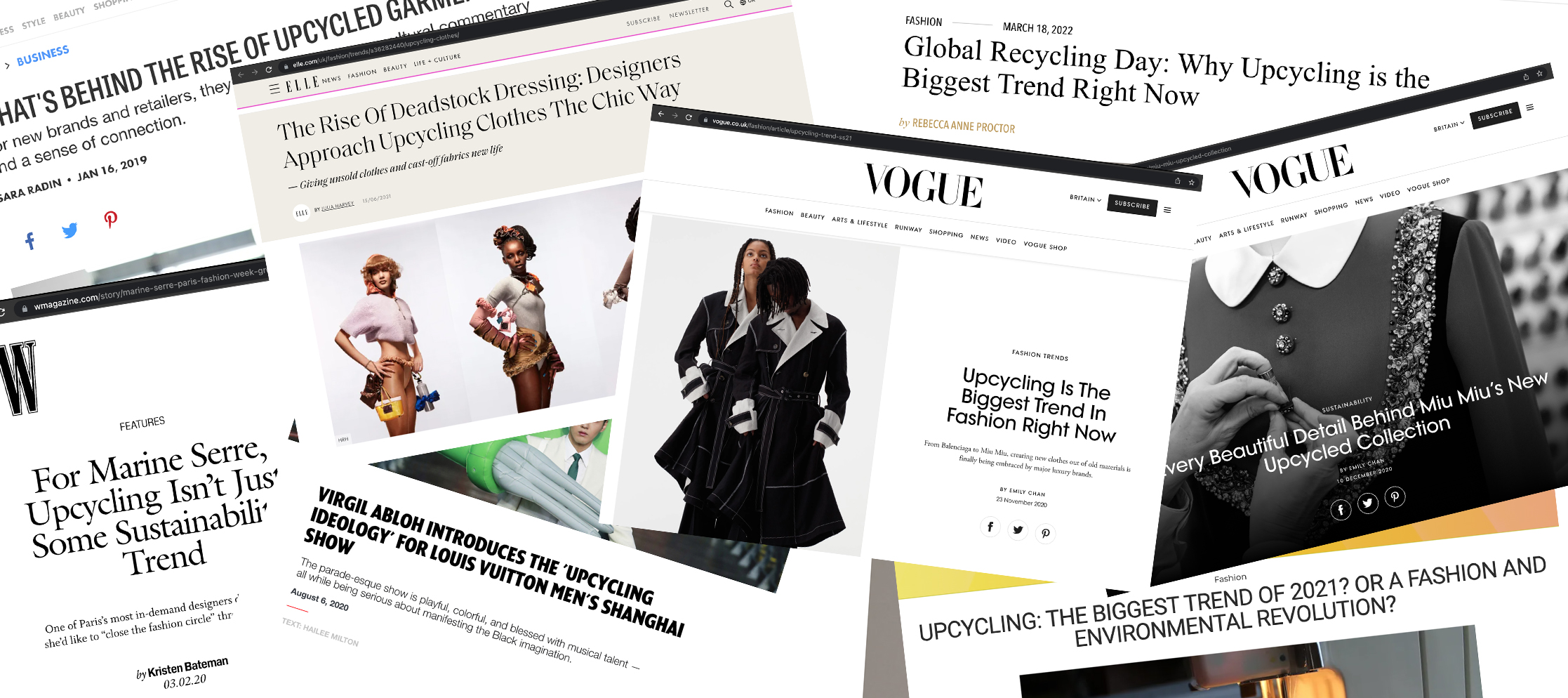
The Rise Of Upcycling; A New Era For Fashion
Vogue has named upcycling as one of the biggest trends of 2021, but to the next generation of conscious consumers, upcycling is not a trend; it’s a new era for fashion.
As it stands, the fashion industry is not sustainable; each year, 1.5 trillion tonnes of water is used to make clothing; and out of the 100 Billion pieces of clothing that is produced each year, only 1% are recycled into new clothing.
The world is continuing to churn out new garments at an alarming rate; it is estimated that we buy around 1.13 megatonnes of clothing in the UK each year, yet we wear 44% of our wardrobes. Fast fashion has caused the devaluation of clothing. Clothing no longer needed or past its season is deemed worthless, which is at odds with the energy consumed in processing, producing, and selling the goods, studies have shown that by giving the garment a second life, it can reduce its CO2e impact by 79%.
Upcycling is a creative solution to the climate crisis; it enables brands and designers to continue to produce without adding to the fashion industry's waste problem. Upcycling makes use of existing pieces of clothing and material, uses minimal additional resources, and ultimately reduces the number of unwanted items that are thrown into landfill. Upcycling is an opportunity for designers and consumers to creatively participate in the world of fashion but through a more sustainable lens.
What Is Upcycling
The definition of upcycling is to reuse discarded clothing, objects, or materials in their current form, creating a product of higher quality or value than the original components, in contrast to recycling, which relies on the use of chemicals or mechanical procedures to break down fibres to be made into new fabrics.
By using materials in their current form, upcycling can double the life expectancy of a garment while avoiding any further environmental impact, making it the most sustainable thing you can do in the industry today. For this reason, we are seeing upcycling become more popular in contemporary fashion.
Upcycling and The Fashion Industry
Once considered a niche or crafty, upcycling has reinvented itself as fashion-forward, innovative, and creative.
One of the luxury fashion industry’s upcycle pioneers is Gabriela Hearst. While this year, her SS21 collection contained 60% upcycled pieces, when interviewed about her transition into upcycling, she said, “The first time we used deadstock and talked about it was in 2017...it was like using a bad word.. you don’t say that word in the luxury vocabulary”. Since then, we have begun to see some of the fashion industry’s key players embrace upcycling, with brands such as Balenciaga, Miu Miu, Louis Vitton, and Marine Serre including upcycled garments in their current collections.
While luxury brands are embracing upcycling, it’s the up-and-coming designers who are truly paving the way for this movement. Designers such as the ones you will find on Alterist are making their mark in the industry with their creativity and unique styles. Along with the environmental benefits that upcycling provides, it also means that each piece is a one-off piece that is carefully designed and handmade by some of the incredibly talented designers.
As awareness surrounding the fashion industry and its impact on our planet becomes more apparent, and the demand for sustainable alternatives continues to grow, people are looking for viable alternatives. As fashion is culture, and culture drives change, upcycling is in the perfect position to lead the change we so evidently need in the fashion industry.
3rd May 2022